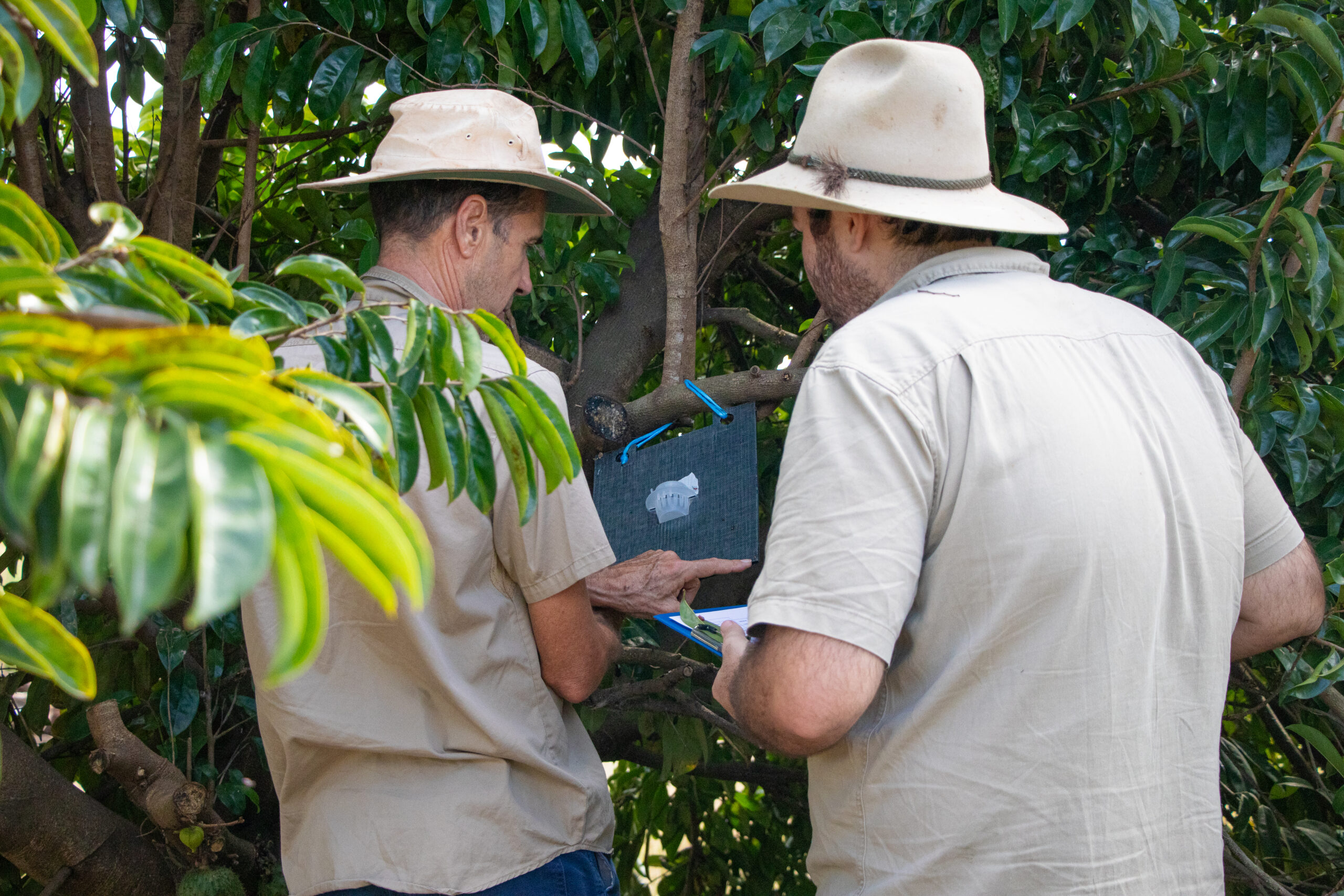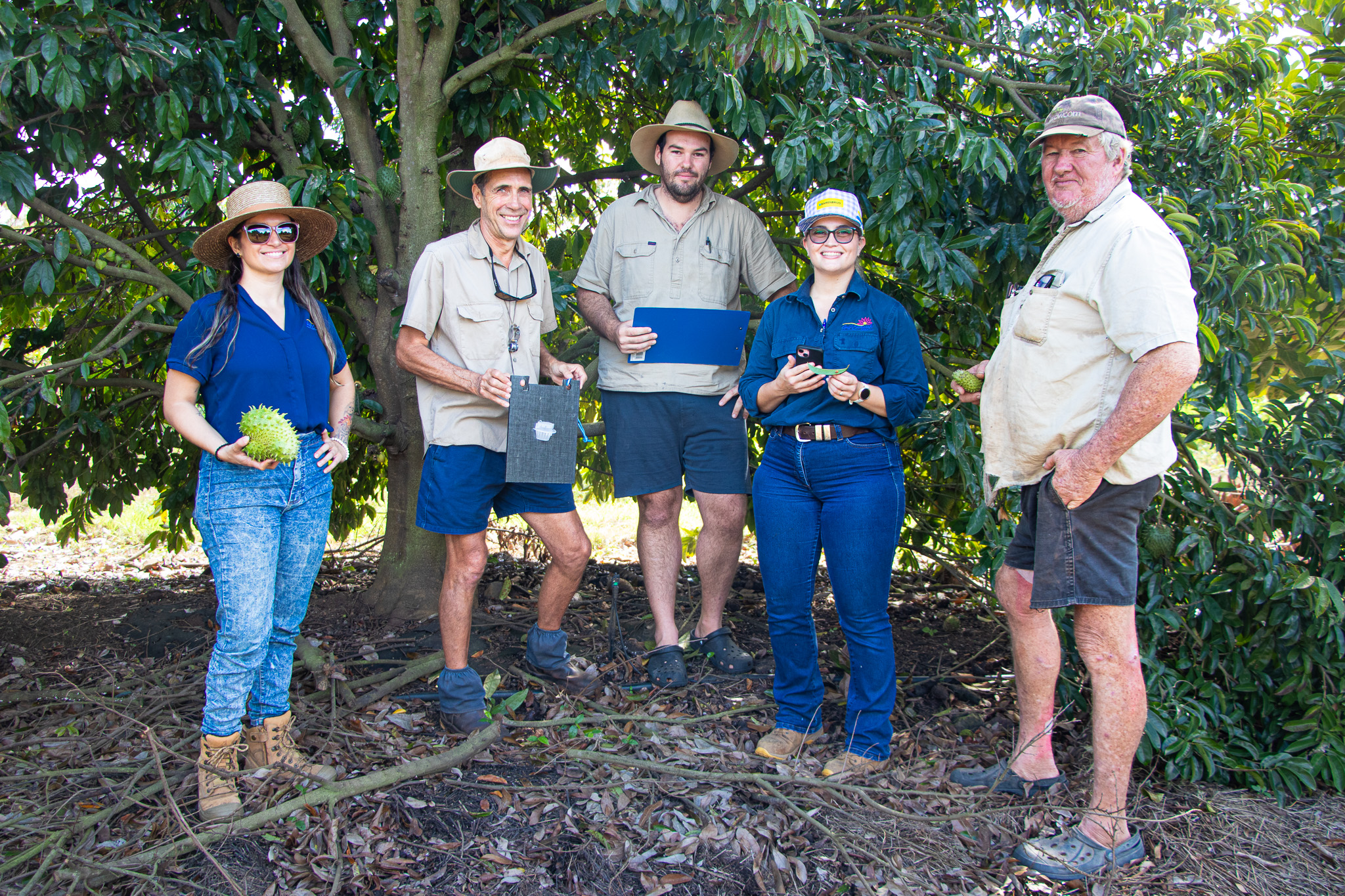Through workshops and trial sites, Gulf Savannah NRM is helping producers swap chemicals for creativity, boost transparency from paddock to plate, and deliver safer, healthier food for consumers.
Life on the land is a frontline; a shock absorber for extreme climates, restless soil, and pests with dietary cravings not unlike our own. As a result, farmers are often called upon as weathervanes for change – the first to feel a sharp pull in a new direction and point the way forward.
Meanwhile, for many consumers, fruit and veg seem to jump from field to bowl. Farm-to-table has taken root in popular culture, but most of the process evaporates like morning fog across the tablelands: easy to romanticise, but not enough to hold our attention for too long. That distance — between the toil of production and polished product on the shelf — is becoming far more traversable with the growth of regenerative agriculture.
Across the Gulf and Far North Queensland, Gulf Savannah NRM (GSNRM) is leading the shift: supporting local farmers to adopt more sustainable practices that benefit both businesses and the broader community, the organisation is conducting a series of workshops over the next three years as part of its Climate-Smart Agriculture Project.
By connecting producers with specialists from various fields, the workshops are building a new knowledge and practical capacity, especially in the Mareeba and Dimbulah locales.
Under the leadership of Agriculture Officer Jessica Miranda, three workshops have taken place so far, each respectively focused on soil health, regenerative farming and the carbon market, as well as integrated pest management. ‘Empowerment’ and ‘knowledge’ were the words Ms Miranda kept trailing back to when speaking to the potential of her project, as well as the co-benefits that will be enjoyed by various demographics.
“Farmers all want to be more sustainable if it doesn’t mean economic loss: they all want to have healthier soil, that’s for sure,” Ms Miranda said. “The Australian market has a huge demand for less pesticides, for organics, for non-GMO; consumers want to eat something that’s healthy and has been grown sustainably,” she said. “Farmers are interested in getting to the point where they don’t need to use pesticides anymore, or chemical fertilisers, and are hoping consumers will also be willing to pay more for these premium products.”
With interest high and practical guidance available, producers are showing up in full force.
Growers get together
If enthusiasm could be measured in bums on seats, then Mareeba and Dimbulah residents were certainly eager on June 25, when more than 50 producers gathered at the Mareeba Leagues Club for the second workshop in the series.
Guest speaker André Leu — Daintree mango farmer and president of Regeneration International — captured the room’s attention when he introduced simple, chemical-free soil care methods, including the use of everyday household products like vinegar.
With over 50 years in the industry, Mr Leu’s presentation combined a deep foundation of science and lived experience.
“Business as usual in farming no longer works”, Mr Leu said. “We actually have what’s called a farming diaspora: people are leaving, so we’re losing millions of farmers all around the world.”
Studies back Mr Leu’s concern. Research from the Food and Agriculture Organisation shows that global pesticide use has risen steadily over the past three decades, yet yields have plateaued, meaning farmers are paying more without necessarily producing more.
Additionally, according to the Australian Bureau of Agricultural and Resource Economics and Sciences (ABARES), the benchmark for on-farm chemical costs rose to $3 billion in 2014, highlighting the economic incentive to explore low-input methods.
Thankfully, Mr Leu believes many growers are already aware of these challenges and are cultivating a landscape for change.
“Most [producers] know the old ways of using toxic chemicals and expensive fertilizers have been a burden on them; they want to move away from that. What we’re doing is offering them practical ways of doing it and showing them how other farmers have successfully done it so they can start this journey,” he said. “It’s practical farming – by farmers, for farmers.”
Betting on bug traps
Beyond the workshops, GSNRM’s Climate-Smart Ag project is also establishing trial sites to test both traditional and emerging methods, giving producers an updated toolkit of techniques. One such site is Jennings Farm, where bug traps have been deployed to reduce chemical use in insect control.
These traps are distributed densely across landholder John Jennings’ graviola crop and use aggregation pheromones to attract banana-spotting bugs to sticky panels. The technology offers precise pest management, while sparing ‘beneficial’ insects and important pollinators.

Throughout various mornings spent alongside John amid his crop, an undeniable sense of custodianship for his land was demonstrated through his words and actions.
“I don’t know if many people realise that we’re facing Great Barrier Reef regulations being implemented with more force in the next year, so anything we can do to show we’re trying to do the right thing, is probably going to be a good thing,” Mr Jennings said.
John is of course referring to the 2026 UNESCO Great Barrier Reef management review, which is likely to emphasize concerns about agricultural chemical run-off and its impact on the reef. The assessment will highlight producers’ role in meeting international water-quality targets and global sustainability goals. But it’s not just the condition of the land and sea that worries Mr Jennings – it’s also the wellbeing of his customers.
“There’s been talk of being able to measure fruit nutrition and chemical content for a long time”, he said. “I haven’t seen it come to fruition yet, but I believe if it does happen – if we can track the fruit right from the end user to the farm – we can look up what exactly has been used on that fruit. It’ll be good and prevent a lot of substandard fruits getting out there.”
In the meantime, John remains optimistic that this emerging bug-trap technology is a tangible first step for “the environment, and for the people eating the fruit”.
Across the region, initiatives like this are multiplying, suggesting that the shift toward regenerative agriculture is less a passing trend and more a timely return to balance — between the land, its caretakers, and those it nourishes.

This project is supported by the Australian Government through funding from the Natural Heritage Trust under the Climate-Smart Agriculture Program.

